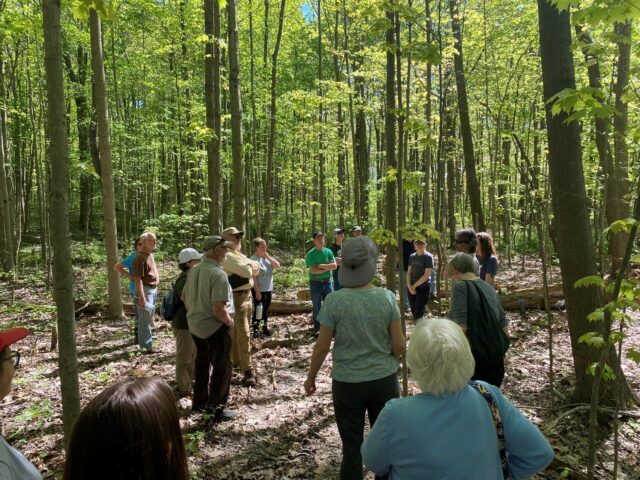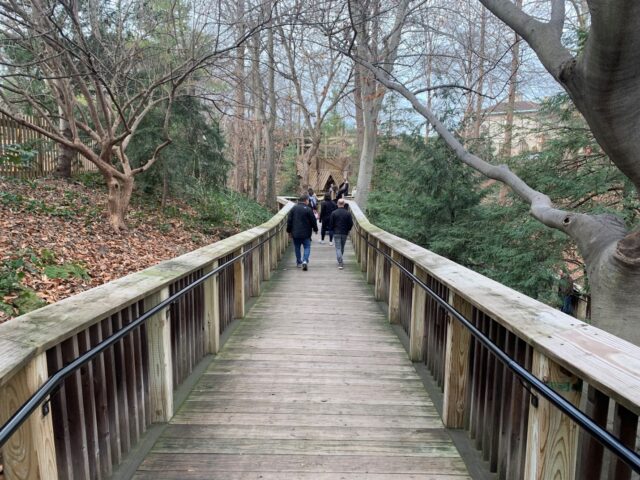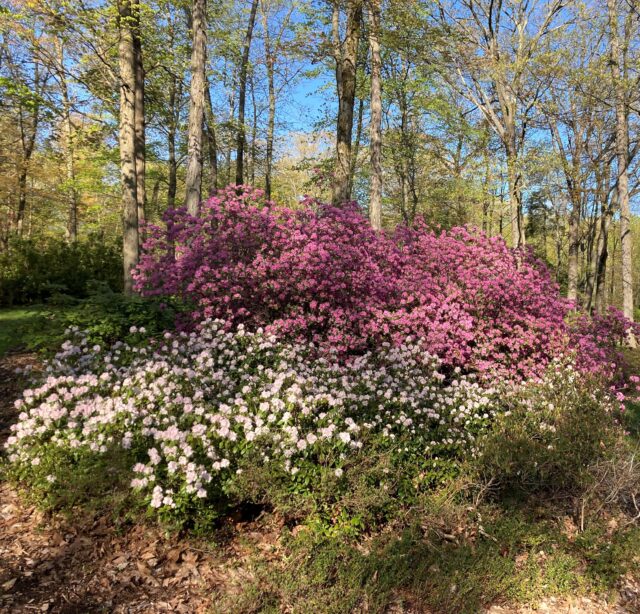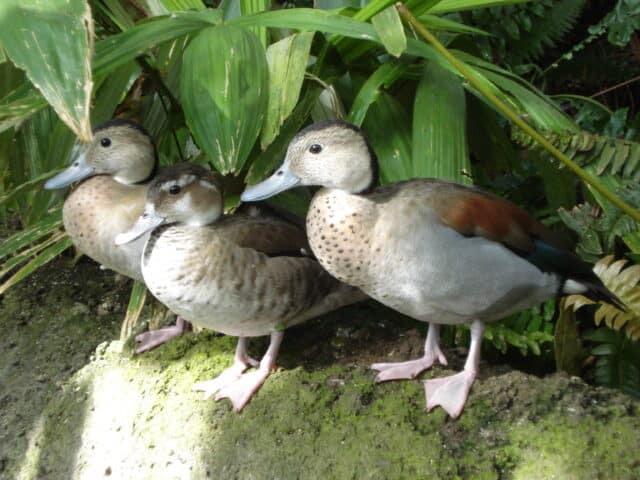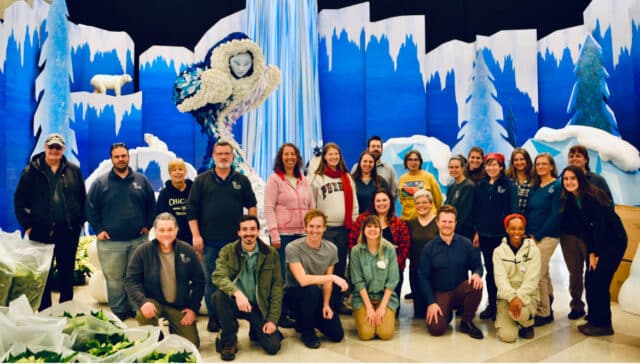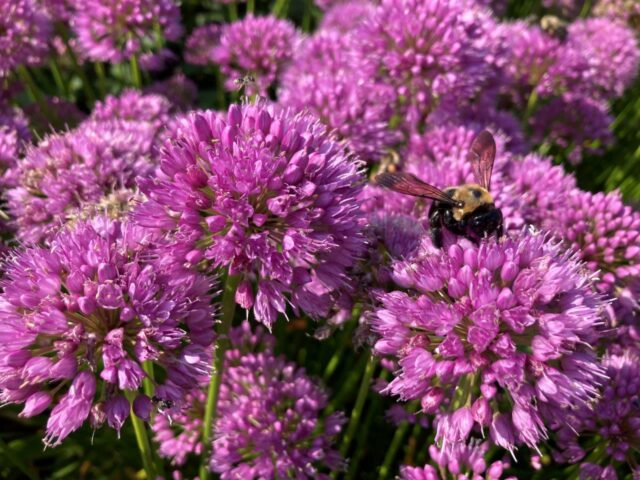
Since 1985, the presidents of the United States have issued a proclamation declaring March as Women’s History Month. This special dedication is to honor the contributions and special achievements of women in various fields throughout American history. We wanted to highlight the work of women who paved the way for new generations of women in both science and conservation. This week, we chose to spotlight the accomplishments of writer, ecologist, and environmentalist Rachel Carson. Born in Springdale, Pennsylvania (just 2.5 hours away from Holden Arboretum) in 1907, Rachel Carson is one of the most influential women in science and conservation. Carson’s interest in the natural world was formed during her childhood when she explored the forests and streams of her family’s 65-acre property. Carson attended college at the Pennsylvania College for Women (now known as Chatham University in Pittsburgh, PA) in the 1920s. Originally, she entered school studying English before switching to biology but continued writing in her free time. Carson went on to earn a M.A. in zoology from Johns Hopkins University in Baltimore MD, a tremendous accomplishment for a woman at that time.

Carson’s skills in both writing and biology helped her land a position with the U.S. Bureau of Fisheries in 1935. By 1936, she was a junior aquatic biologist with the Bureau of Fisheries and was one of only two women employed with the Bureau at the time. Carson went on to have a 15-year long career with the U.S. Fish and Wildlife Service (USFWS) after its creation in 1940s, eventually becoming the Editor-in-Chief of all publications. Carson’s responsibilities in this role included preparing congressional testimony, writing speeches for USFWS personnel, and overseeing USFWS library and staff. Outside of her responsibilities, Carson kept on writing, eventually publishing six books during her lifetime.
Rachel Carson is most well known as the author of Silent Spring, which was published in 1962. This book challenges the agricultural practices in place at the time and called for a change in the way the natural world is viewed. Her interest in this topic started during her time with USFWS where Carson became interested in the danger of pesticides. Her concern only increased after the introduction of DDT, an insecticide, in 1945. The publication of Silent Spring caused controversy across the U.S. and resulted in a campaign against Carson by the pesticide industry to discredit her. Through this adversity, Carson persisted and testified before a Congressional committee during the complete review of pesticide policy by the federal government. In 1972, a cancellation order for DDT was issued due to its adverse environmental effects and potential for human health risk. Carson has long been credited with the beginning of the environmentalist movement. More than 14,000 scientists, lawyers, managers, and other employees came together to fight for environmental protection. This movement inspired by the work of Rachel Carson lead to the creation of the Environmental Protection Agency (EPA) and the first Earth Day celebration in 1970.
Since her death in 1964, Carson’s legacy lives on in many ways. To honor the memory of this extraordinary woman, the Fish and Wildlife Service named one of its refuges after Carson in 1969 near her summer home on the coast of Maine. A trail in Allegheny County, Pennsylvania was named after Rachel Carson in 1975 after its completion. This 45.7-mile trail passes close to the birthplace of Carson in Springdale and is managed by the Rachel Carson Trail Conservancy who is dedicated to the development, protection, and promotion of trails through western Pennsylvania. Even the rebound of bald eagle populations across the U.S. can be credited to Carson. Fish – one of the main food sources of eagles – absorbed DDT that entered waterways, and ultimately lead to more fragile eggshells of bald eagles. Only 417 nesting pairs of eagles remained by 1963 because of the reproduction impacts from DDT, and eagles were listed as endangered in 1978. The ban on DDT along with years of conservation efforts have led to a rebound of bald eagle populations with roughly 71,000 breading pairs in the U.S. in 2019.
The resiliency and bravery of women like Rachel Carson to stand by her work in the face of adversity has created a unique legacy in the world of science and conservation. Her writings expressed her love for the natural world and encouraged millions to better care for our environment with her. Carson’s passion, drive, and dedication makes her a role model for all women pursing careers in science and conservation, including here at Holden Forests & Gardens.
References
“Bald Eagle Haliaeetus leucocephalus”. U.S. Fish & Wildlife Service. 2021. https://www.fws.gov/sites/default/files/documents/bald-eagle-fact-sheet.pdf. Accessed 19 March 2024.
Michals, Debra. “Rachel Carson.” National Women’s History Museum. National Women’s History Museum, 2015. Accessed 19 March 2024.
Lear, Linda. “Biography”. The Life and Legacy of Rachel Carson. 2015. https://www.rachelcarson.org/biography. Accessed 19 March 2024.
Lewis, Jack. “The Birth of EPA”. US Environmental Protection Agency. EPA Journal November 1985. https://www.epa.gov/archive/epa/aboutepa/birth-epa.html. Accessed 19 March 2024.
“Rachel Carson (1907-1964) Author of the Modern Environmental Movement”. U.S. Fish & Wildlife Service. https://www.fws.gov/staff-profile/rachel-carson-1907-1964-author-modern-environmental-movement. Accessed 19 March 2024.
Ryerson, Jade. “Rachel Carson.” National Park Service. https://www.nps.gov/people/rachel-carson.htm. Accessed 19 March 2024.

Brianna Shepherd
Research Specialist
As a research specialist in the Stuble Lab, I am leading the Beech Leaf Disease forest monitoring research project. Started in 2023, this project aims to explore and quantify changes in the forest community as forests are impacted by Beech Leaf Disease. The goal of this study is to better understand the implications of dieback of beech trees for forest health, forest resource availability, and the future composition of forests. As lead on this project, I oversee surveying and data management.

